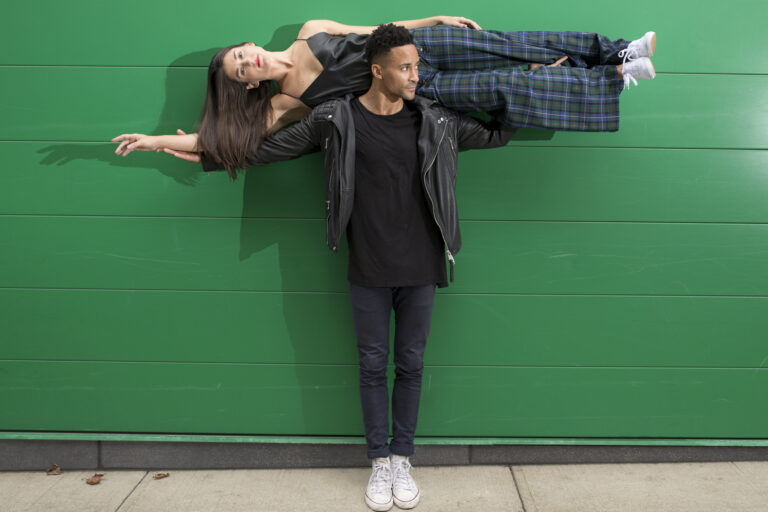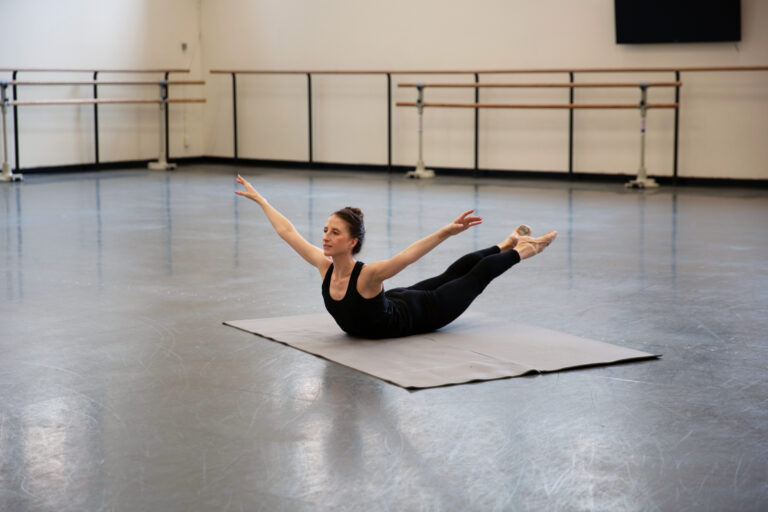
When Edwin Aparicio took his first flamenco class, he was a recent high school graduate looking for opportunities to further his ballet training. But he immediately “fell in love, head over heels, with flamenco,” he says. “The complexity of the footwork, and the singing, and the intricacy of the dance with the guitar and the singing—it was a puzzle I had to decode.” A few years later, he made his professional debut as a flamenco dancer in El Gato Montés with the Washington Opera (now the Washington National Opera) at The Kennedy Center. That was when Spanish choreographer Goyo Montero took Aparicio under his wing, encouraging him to take the money he made from the show to go study flamenco in Spain. “I’d never left the U.S. before, but I went to Spain for three months,” says Aparicio.
That trip was the first of many Aparicio has now taken to the country where flamenco originated—and it officially launched his career. Upon returning to the U.S., Aparicio toured with renowned flamenco dancer José Greco, did school flamenco shows, performed in the Washington Opera’s Don Giovanni, and began to make a name for himself as a soloist and choreographer. At the same time, he was developing his identity as a teacher. “People were asking me to teach what I’d learned in Spain,” he says. “This was before YouTube. We all depended upon teachers going to Spain and coming back to share what they’d been given.”
These days, Aparicio teaches intermediate and advanced classes in Silver Spring, Maryland. (He’s also on faculty at the Washington School of Ballet.) He asks that adult students have at least five years of flamenco experience before joining his class. “I want them to know how to use the feet and the arms, and to have a basic knowledge of the palos, or the flamenco rhythms,” he says. “I teach technique through choreography. I don’t just do footwork, upper body, turns. Everything is included in a dance—and sometimes that dance will take months to complete.” Why spend so long on one piece of choreography? “In flamenco, you have to learn the song as well as the movement,” Aparicio says. “This is a folk art. In order to do it justice, we need to really understand it.”
Despite working primarily with intermediate and advanced students himself, Aparicio encourages dancers from any genre to give flamenco a try. “If you have a dance background, you have skills that will help you with flamenco,” he says. “Tappers and step dancers can connect with the rhythms. For ballet dancers, it’s the flow of the body movement.”
For his DanceTeacher+ Lesson Plan, Aparicio shares a traditional llamada por bulerias. Bulerias is a fast-paced flamenco style often done at private fiestas or closings to performances. A llamada(“call,” in Spanish) is a special sequence used to signal to the singers or musicians that a change is about to happen. “Flamenco dancers need to have a really good understanding of flamenco musical phrasing to know where llamadas can be inserted and how they function,” Aparicio explains. “Bulerias has multiple rhythmic patterns based on a 12-beat phrasing. The most common pattern has accents on counts 12, 3, 7, 8, and 10. It takes practice to hear and be able to follow this rhythmic pattern within the music. Most llamadas por bulerias are done by emphasizing beats 1, 2, and 3. This helps to break the pattern I just mentioned and gets the musician’s attention.” There are other variations of the llamada, but in bulerias, the phrasing always ends on count 10.
Step by Step
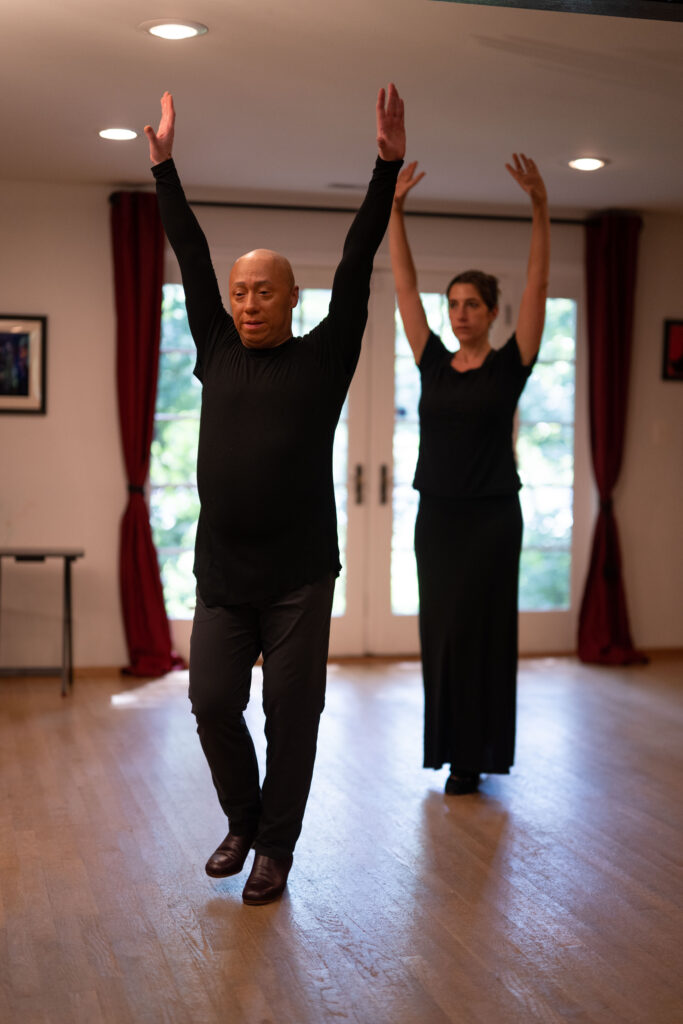
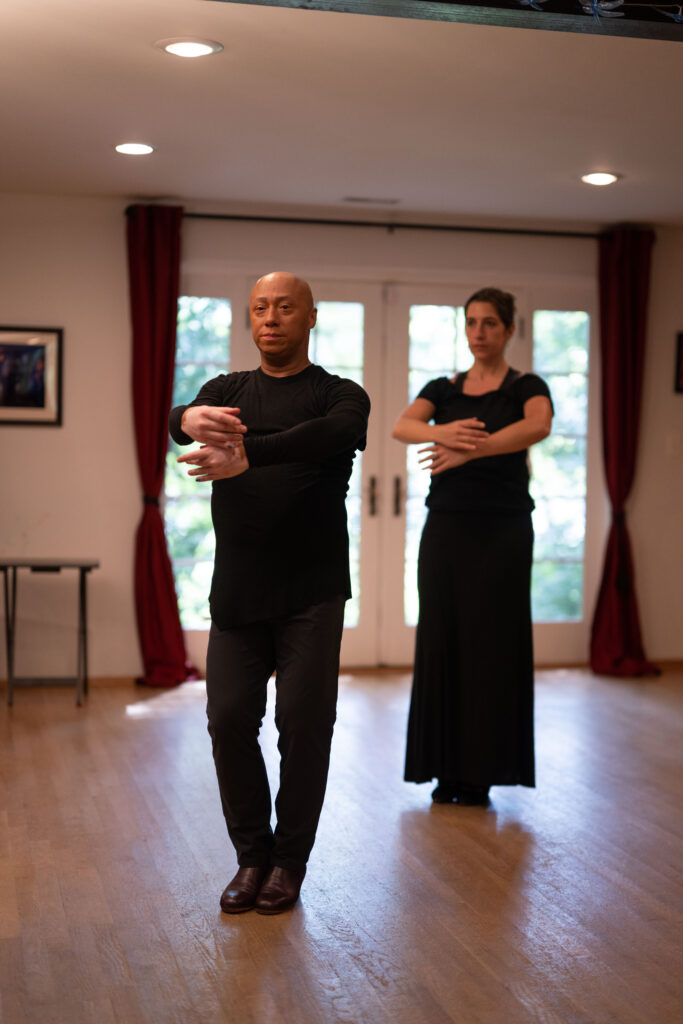
Count 12 (preparatory) and counts 1, 2, 3:
Stand with feet together in parallel. On count 12, the left foot steps forward and the arms go up, tracing semicircles on each side. The right foot catches up with the left and stomps (flat) three times in place on counts 1, 2, and 3. On the same counts, the arms go down in a slow, continuous motion, ending up crossed slightly in first position on count 3.
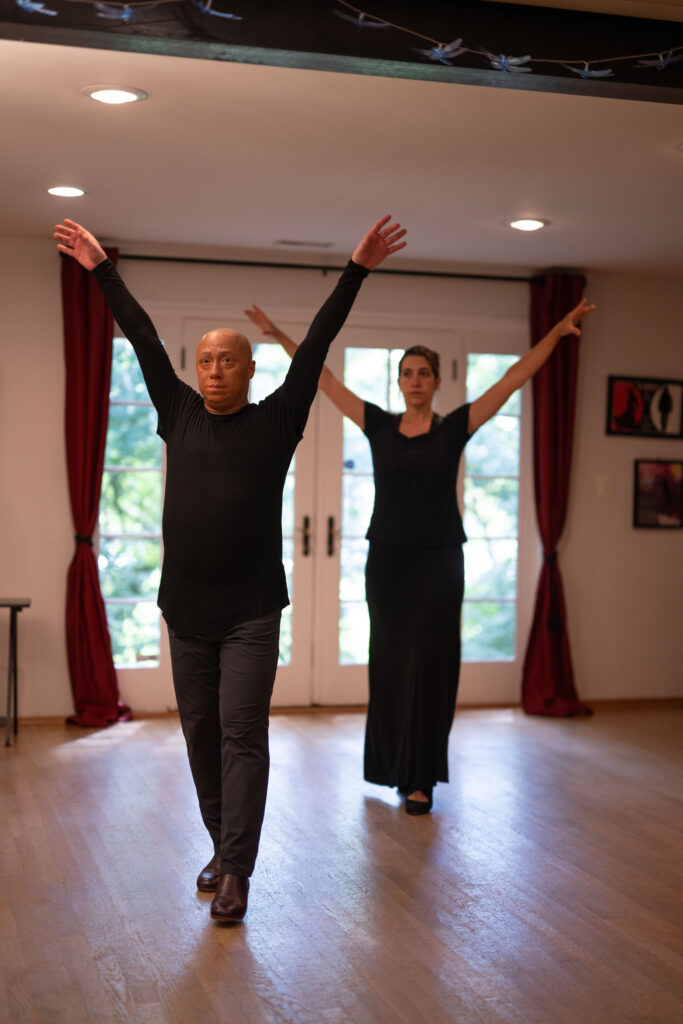

Counts 4, 5, 6:
On count 4, take a slight step forward with the ball of the left foot, followed by a full step forward on count 5 with the same foot. At the same time, the arms go up again. On count 6, bring your right leg back to prepare for a turn (4th position) with the ball of the foot, while maintaining the weight on the left. The arms go down to fourth position.

Counts 7, 8, 9, 10:
On count 7, do an outside turn on the left standing leg. Keep the arms close at chest level while turning. On count 8, bring your right leg back to your turning preparation, landing on the ball of the foot. On count 9, repeat the turn. On count 10, bring your feet together. Unlike in ballet, flamenco turns are sharp and maintain the level in demi-plié (without going on relevé).
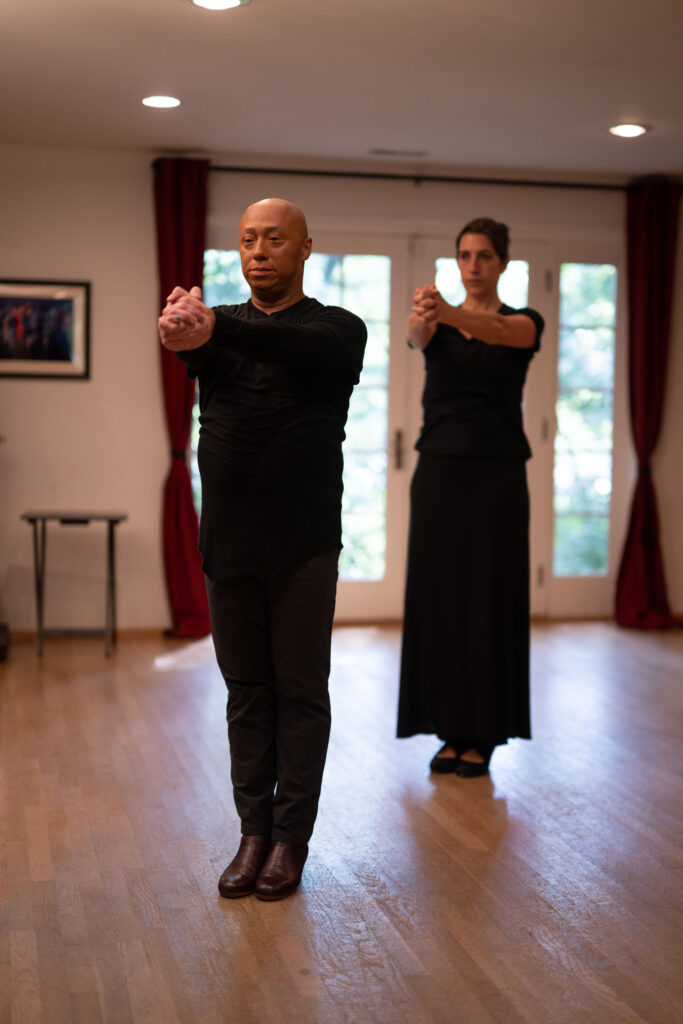
Counts 11 and 12:
Count 11 prepares to jump back with both feet. Jump on count 12, with both arms meeting at chest level in a clap.

Counts 1 through 6:
Walk forward on count 2 with the right foot and cross with the left on count 4. Unwind and turn to the right on count 5. End with feet together and hold in place on count 6.
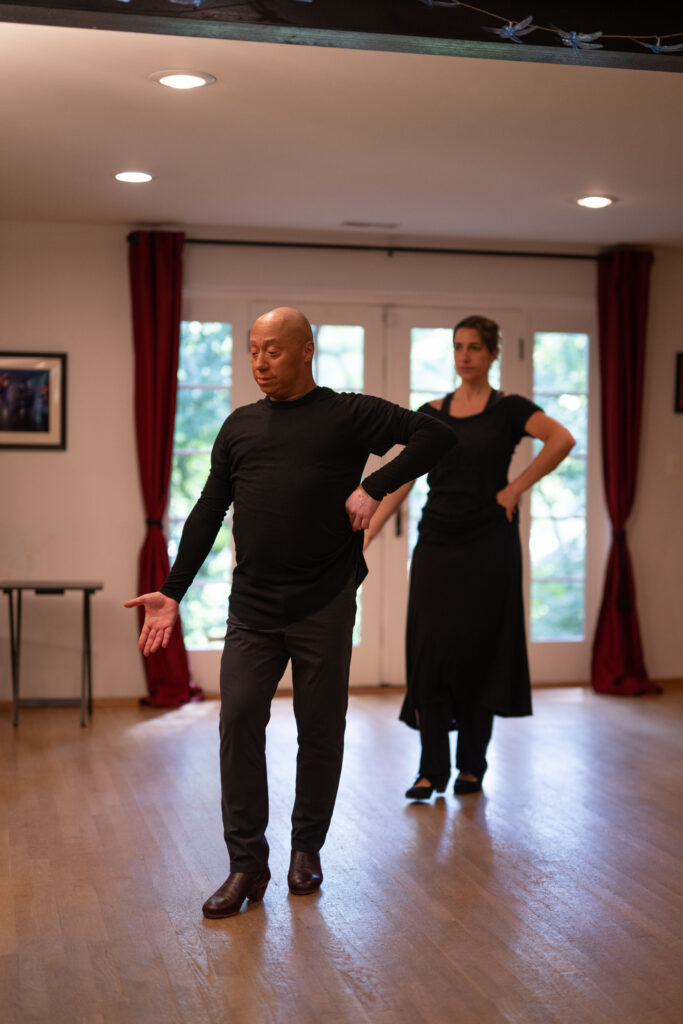
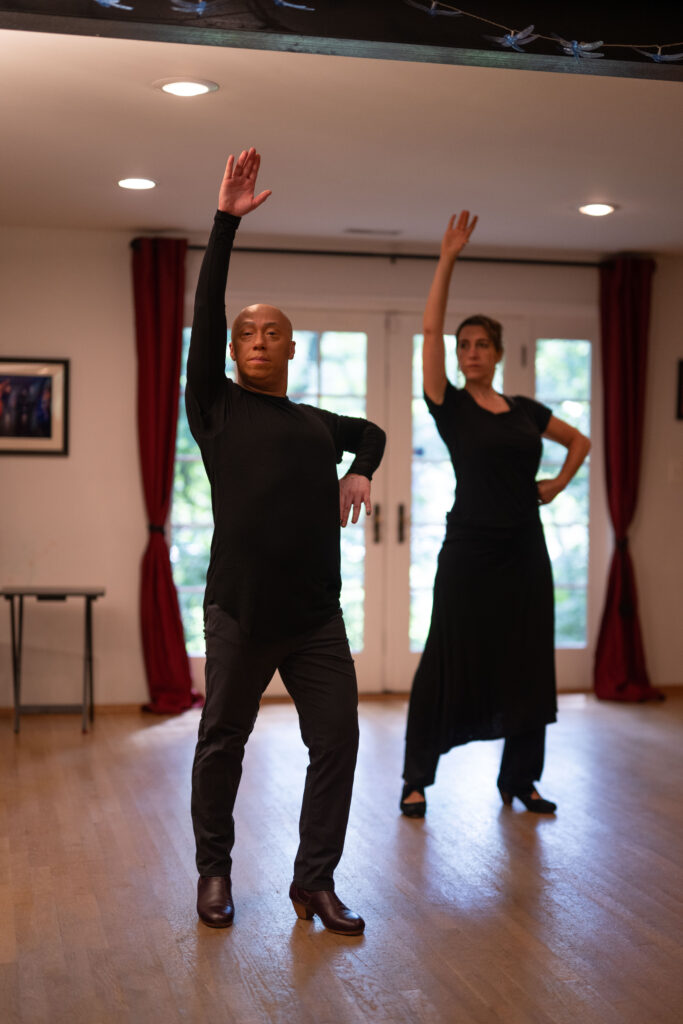
Counts 7, 8, 9, and the final count 10:
Perform two quick light stomps on your right foot on “and 7,” followed by two light stomps with your left foot on “and 8.” Do two final stomps on counts 9 and 10 with the right and then left, marking a dramatic finish. Raise one or both arms on 10 to emphasize the ending.



